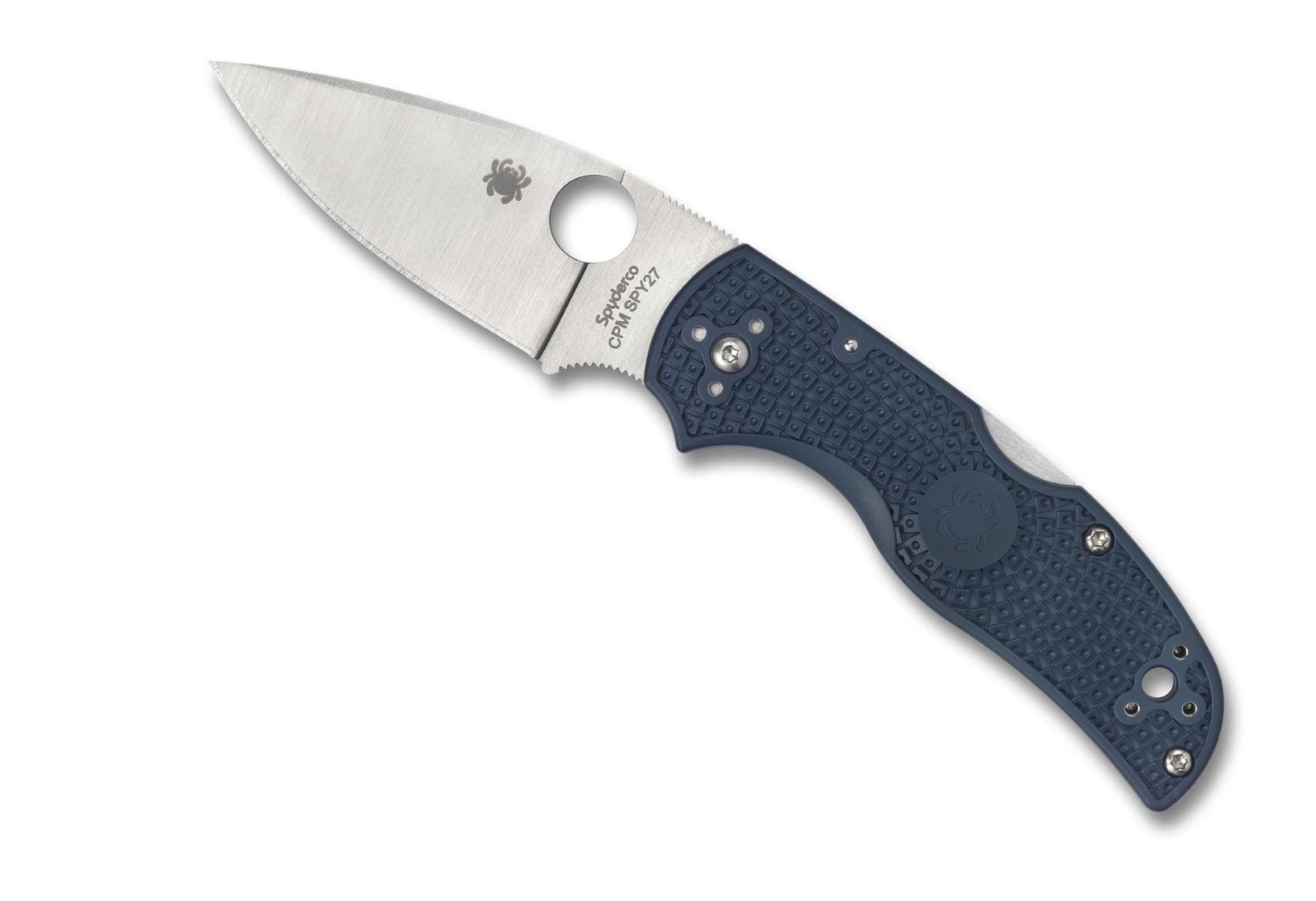Spyderco Create New Knife Steel for their Latest Blade
Spyderco have set an industry first by commissioning a proprietary new knife steel for their latest blade with legendary steel producer Crucible Industries.
For the uninitiated, steel probably falls into two categories – normal and stainless. For those in the know, however, there are in fact many different steel alloys, all with different properties.
The Low-Down on New Knife Steels
Steel is an alloy of iron and carbon. The British inventor, Henry Bessemer, discovered in the 1850s that the addition of just a tiny percentage of carbon to the mix significantly improved the strength and facture resistance over pure iron.
Over the years, experimentation has found that adding other elements such as manganese, chromium and many others affected different properties of the finished steel.
The Five Key Properties of a Steel Alloy
1 Hardness
The harder a steel is, the less likely it is to become deformed by bending under pressure. Specific to knife steels, hardness is measured on the Rockwell C scale (aka “HRC”).
2 Toughness
Though in common parlance hardness and toughness are synonyms, not so in the world of knife steel! Toughness refers to a steels ability to resist chips or cracks from sudden impacts or loads. Counterintuitively, the harder a steel is, the less tough it’s likely to be due to increased brittlness.
3 Corrosion Resistance
This is where the “Stainless” part comes in. Corrosion occurs when the iron in the steel becomes oxidised by agents such as humidity and salt. Typically, there’s a trade-off between hardness and corrosion resistance as the elements added to combat oxidation result in a softer alloy.
4 Wear Resistance
Wear resistance is a steels ability to withstand the abrational effects from cutting and sawing. Adding larger carbicides (carbon particles) generally increases wear resistance, but decreases toughness (making the steel more brittle).
5 Edge Retention
Edge retention is a measure of how long the steel maintains its edge under repeated use. It is affected by all four of the above variables however, so varies greatly depending upon the use the knife is put to, and the elements to which it’s exposed.
The Most Common Outdoor Knife Steels
Taking all of this into account, the most common steel alloys used for outdoor type knives fall into two main categories:
1 Carbon Steels
Carbon steel is usually used in survival knives and machetes, where toughness and durability are very important. The blades can be used for hacking, sawing and most notably prying. They lose their edge quickly, but are easily sharpened. The biggest downside is they are prone to rusting. The most common carbon steel alloy is 1095.
2 Stainless Steels
Stainless steel is basically carbon steel with the addition of at least 13% chromium. This makes the blade much more resistant to oxidation, but at the expense of toughness. The most popular for decent quality knives is 440C.
The Super New Knife Steels
440C steel was invented in Germany in 1914, and has considered the cutting edge of knife steels (pun fully intended, sorry…) up until pretty recently.
Over the years however, manufacturers have been experimenting with different alloys to produce further improvements and now there are a vast number of different stainless steel alloys out there.
These all have slightly different ratios of the above 5 Key Knife Blade Properties – some of them are so hard and tough you literally can’t sharpen them yourself!
Enter CPM SPY27 – The New Knife Steel from Spyderco

Developed in collaboration with Crucible Industries,
CPM SPY27 is a particle metallurgy stainless steel containing a proprietary mix of alloys, including vanadium, molybdenum, niobium, nitrogen, and cobalt.
Spyderco
This new alloy is a “Powder Steel“, this is a modern technique that disperses the carbides and other elements as much finer particles throughout the steel, thus avoiding the aforementioned problems of brittleness associated with larger particles in the alloy.
One downside to most powder steel blades is that they can be too tough – tough to sharpen that is.
CPM SPY27 aims to be a great allrounder – high levels of hardness and corrosion resistance like Crucibles other powder steels, increased toughness, but with a slight loss in edge retention. The silver lining of the latter however, is easier self maintenance.
All those factors put together make this look like a great knife steel for the outdoor enthusiast that needs a tough multipurpose blade they can maintain on the road.
Native 5 First Blade to use CPM SPY27
Can’t wait to get your hands on this new steel?
Check out the Native 5 FRN CPM SPY27, the first of Spyderco’s knives to be made with the new alloy.
A very nice looking knife, it’s being made in a limited run with a signature cobalt-blue fiberglass-reinforced-nylon (FRN) handle.
It’s a small, lightweight blade, 10cm when folded with a 75mm blade, weighing in at just 68g.
It has an ambidextrous clip, which I’m happy to hear being a lefty!
This price is good too at $180. Reasonable considering it’s a limited run with a proprietary steel that should last you a lifetime.



